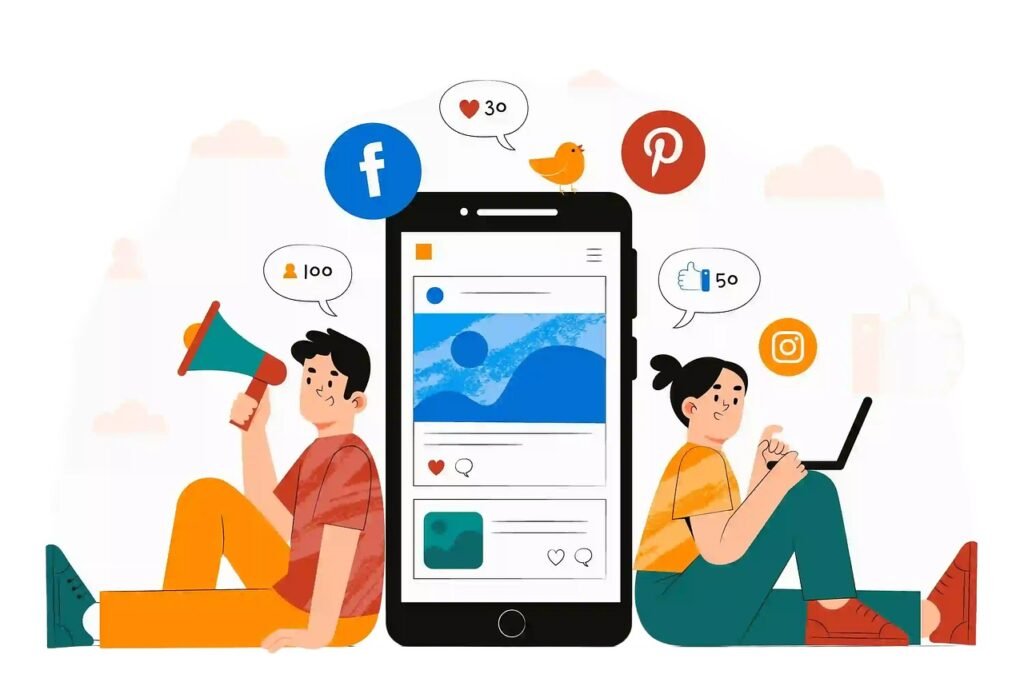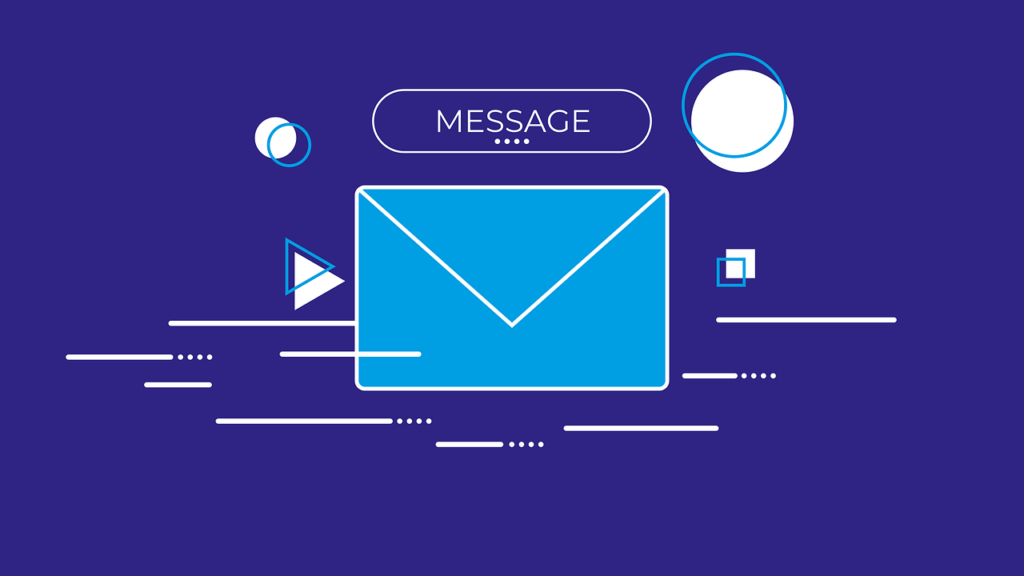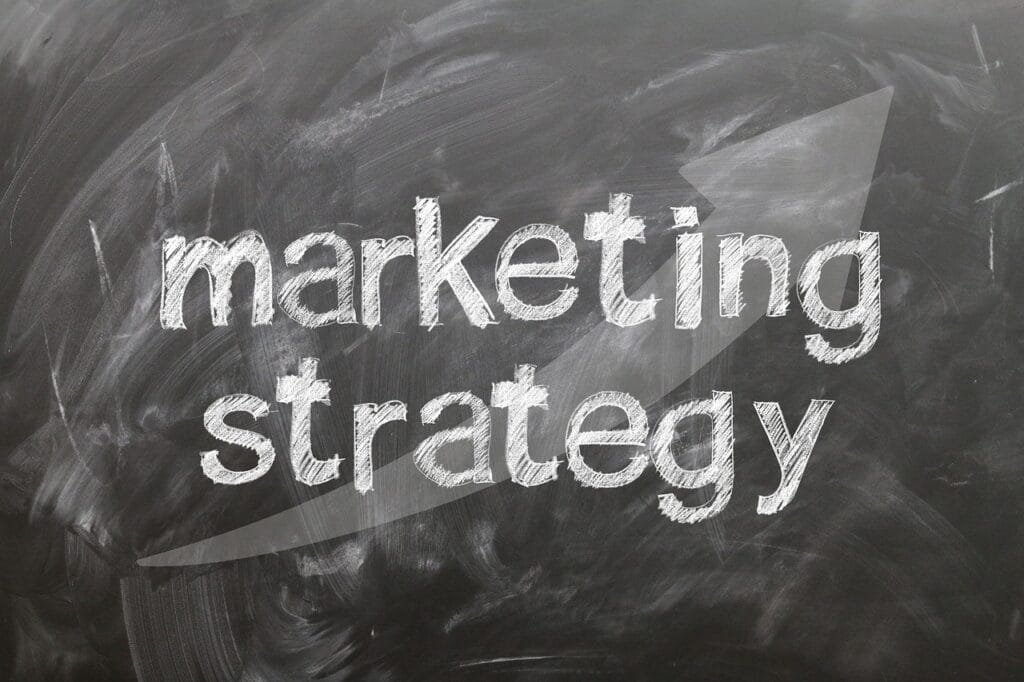This Article has been revised, edited and added to, by Poulomi Chakraborty.
- The Importance of SEO and Content Marketing
- Leveraging Social Media for User Acquisition
- Email Marketing: Nurturing Leads into Loyal Users
- Integrating Analytics to Optimize Digital Marketing Strategies
- Harnessing the Power of Retargeting Campaigns
- Enhancing User Experience with Chatbots
- Implementing Influencer Partnerships
- Extending Reach and Credibility
- Tracking Influencer Campaign Success
- Establishing Goals for Influencer Collaborations
- Selecting the Right Influencers
- Crafting Collaborative Content
- Structuring the Partnership for Long-Term Success
- Measuring the Impact of Influencer Partnerships
- Navigating Challenges and Adjusting Strategies
- Conclusion
In the fast-paced world of software as a service (SaaS), staying ahead means not just catching the eye of potential users, but keeping them engaged and committed to your product long-term. Digital marketing is the powerhouse behind successful user acquisition and retention strategies. It’s about more than just reaching out—it’s about connecting, convincing, and converting audiences in ways that are both measurable and scalable. This article explores how SaaS companies can harness the power of digital marketing to fuel growth and sustain a competitive edge.
The Importance of SEO and Content Marketing

Engaging the Right Audience with SEO
Search engine optimization (SEO) and content marketing are two pillars of digital marketing that can significantly boost your SaaS company’s visibility and attractiveness. While both aim to draw in visitors, their strategies for engagement and conversion can differ markedly. Let’s compare how each contributes uniquely to user acquisition and retention.
SEO is all about enhancing your online presence to ensure that when potential users search for solutions your SaaS offers, your website appears front and center. It involves optimizing your website’s structure, enhancing keyword usage, and building backlinks to elevate your site’s authority and ranking on search engines like Google.
The primary goal is to increase organic traffic—visitors who find you through a search query—which is crucial because these users are often looking for a solution actively and are more likely to convert into paying customers.
For SaaS companies, SEO must be meticulously planned. Your keyword strategy should focus on terms that are highly relevant to your product and the problems it solves, but also on keywords that indicate readiness to buy or sign up for a trial. For instance, targeting phrases like “best software for automated invoicing” or “affordable project management tools” can attract users who are already considering SaaS solutions and are further along in the decision-making process.
Building Relationships with Content Marketing
In contrast, content marketing focuses less on drawing in traffic through search engines and more on creating valuable, relevant content that resonates with your target audience, encouraging them to engage more deeply with your brand. This can include blog posts, white papers, ebooks, videos, and more.
The aim here is not just to attract but to retain users by establishing your brand as a leader in the industry, a source of reliable and insightful information, and a solution provider that understands their needs and challenges.
Effective content marketing for SaaS companies involves understanding the user journey from awareness to decision-making. Content should be crafted to address each stage of this journey. For example, a series of blog posts can educate potential users about the benefits of your product, followed by case studies that demonstrate how your product has successfully solved similar problems for other companies.
Additionally, offering free tools or resources, such as an ebook on best practices in your industry, can help in capturing email addresses and building a subscriber base that you can nurture over time.
The Intersection: SEO-Powered Content Marketing
The most successful digital marketing strategies for SaaS companies often combine the strengths of both SEO and content marketing. By optimizing content for search while also making it engaging and informative, you can attract a higher volume of potential users and keep them interested.
For instance, a well-optimized article on “How to improve team productivity with project management software” that ranks high on search engine results pages (SERPs) draws traffic, while the quality of the content ensures that readers stay longer on your site, perceive your brand as trustworthy, and are more likely to convert into users.
This integration not only boosts your visibility but also strengthens your relationship with users, fostering loyalty and encouraging long-term retention. As you continue to produce valuable content that meets your audience’s needs, you solidify your position as an industry authority, which is critical for the SaaS sector where trust and credibility are paramount.
Leveraging Social Media for User Acquisition

Building a Community Around Your Product
Social media platforms offer SaaS companies a unique opportunity to build communities around their products, engage in real-time communication with users, and boost brand visibility through shared content and interactions.
Unlike traditional marketing channels, social media allows for a two-way conversation between you and your potential or existing customers. This interactive nature can significantly enhance user acquisition efforts by fostering a sense of community and belonging among users.
For a SaaS company, platforms like LinkedIn, Twitter, and even Facebook can be used to target specific industries, professional groups, or niches. For instance, LinkedIn is ideal for B2B SaaS solutions, where content can be tailored to appeal to professionals and decision-makers in relevant industries.
Twitter, with its fast-paced nature, is great for sharing industry news, updates, and quick tips. Facebook groups can be a resource for creating a user community that supports customer service and user feedback.
Boosting Engagement with Targeted Campaigns
Social media ads and sponsored posts can be highly effective in targeting specific demographics or interests. These platforms offer robust targeting tools that allow you to refine your audience to those who are most likely to be interested in your SaaS product based on their professional title, industry, interests, or past online behavior.
By crafting compelling ad campaigns and combining them with engaging organic content, you can drive both awareness and conversions. For example, a targeted ad campaign for a project management tool can direct potential users to a landing page offering a free trial or a demo, capturing leads and initiating the user acquisition process.
Email Marketing: Nurturing Leads into Loyal Users

Personalizing User Experiences
Email marketing remains one of the most effective tools for nurturing leads and retaining customers in the SaaS industry. The power of email lies in its ability to personalize communication with each user. Through segmented email lists and targeted messaging, you can create personalized experiences that speak directly to the user’s needs and stage in the customer journey.
For new leads, an email series can introduce them to your product, highlight key features, and address common questions or objections. For existing users, regular updates, tips on using the product more effectively, and exclusive offers can keep them engaged and reduce churn.
Personalization goes beyond just including the user’s name in the email. It involves tailoring the content based on the user’s behavior, such as the features they use most or the content they have shown interest in, thereby increasing the relevance and impact of the messages.
Automating Customer Lifecycle Communications
Automated email workflows are crucial for effectively managing user relationships at scale. These workflows can trigger emails based on specific actions taken by the user, such as signing up for a trial, completing a purchase, or reaching a usage milestone.
For instance, a welcome email immediately after sign-up can set the tone of the relationship, followed by a series of educational emails that guide the user through getting the most out of your product.
Automation can also help in retaining users by re-engaging those who haven’t used the product in a while. An automated email can be sent to users who haven’t logged in for a month, offering help or highlighting new features that might interest them. This proactive approach can prevent churn and remind users of the value your SaaS provides.

Related: Check out our free SEO suite

Integrating Analytics to Optimize Digital Marketing Strategies
Setting Up Metrics for Success
The cornerstone of any effective digital marketing strategy, especially for SaaS companies, is the ability to measure and understand the impact of your efforts. Analytics play a critical role in this process by providing data-driven insights that inform decision-making and strategy adjustments.
To start, it’s essential to identify key performance indicators (KPIs) that align with your business goals. These could include metrics such as website traffic, conversion rates, customer acquisition costs, churn rate, and customer lifetime value.
For each digital marketing channel, whether it’s SEO, social media, or email marketing, specific metrics should be monitored to gauge effectiveness. For instance, for SEO, you might track organic traffic, bounce rate, and keyword rankings.
For social media, engagement rates, click-through rates (CTRs), and follower growth are relevant. Email marketing metrics could include open rates, click rates, and conversion rates from email campaigns.
Leveraging Analytics Tools
There are numerous analytics tools available that can help SaaS companies track these metrics. Google Analytics is a foundational tool for monitoring website traffic and user behavior. It can help you understand how users are finding your site, which pages they are spending time on, and what actions they are taking.
Social media platforms often have their own built-in analytics (like Twitter Analytics and Facebook Insights) that provide data on post performance and audience demographics.
For email marketing, most email service providers offer comprehensive analytics that includes tracking opens, clicks, and conversions. Tools like Mailchimp or HubSpot not only allow you to see how your emails are performing but also how they contribute to your overall marketing funnel.
Analyzing Data to Inform Strategy
Once you have data, the next step is analysis. This involves looking for trends, patterns, and insights that can help optimize your marketing efforts. For example, if you notice that certain types of content (like how-to guides or tutorials) on your blog have higher engagement and help drive conversions, you might decide to increase the frequency of this type of content.
Similarly, if data shows that a particular demographic segment on LinkedIn is engaging more with your ads, you might adjust your budget to focus more on this platform and audience. The key is to continuously test and tweak your campaigns based on the insights gathered from your analytics.
Using Data for Predictive Analysis and Machine Learning
Advanced SaaS companies can take analytics a step further by using predictive analysis and machine learning. These technologies can help predict user behaviors, identify potential churn risks, or even suggest the most effective content for individual users.
For example, machine learning algorithms can analyze email campaign data to determine the best times to send emails to maximize opens and clicks or to personalize content for different segments of your audience.
By integrating these analytical techniques, SaaS companies not only improve their current marketing strategies but also enhance their ability to anticipate and meet future customer needs.
Harnessing the Power of Retargeting Campaigns

Strengthening User Engagement and Conversion
Retargeting campaigns are a powerful tool for SaaS companies aiming to increase user acquisition and retention. These campaigns target users who have previously interacted with your website or product but didn’t convert into paying customers. By displaying relevant ads across different platforms and devices, retargeting keeps your brand top of mind and encourages users to revisit your offer.
For instance, if a user visits your product page and leaves without signing up for a trial, you can use retargeting ads to remind them of your product’s benefits or offer them a special discount to sweeten the deal. Platforms like Google Ads and Facebook offer extensive retargeting options that can be customized based on user behavior, such as pages visited, time spent on site, and actions taken (or not taken).
Personalization at Scale
Retargeting also allows for high levels of personalization. By segmenting your audience based on their interaction levels and interests, you can tailor your ads specifically to their needs and stage in the buying process. This makes the ads more relevant and increases the likelihood of conversion.
For example, you could create different ad sets for users who checked pricing but didn’t sign up, users who used a specific feature in a free trial, or users who haven’t logged in for a certain period.
Crafting a Cohesive Retargeting Strategy
Retargeting is a formidable tool for SaaS startups seeking to maximize the efficiency of their marketing efforts. A well-crafted retargeting campaign begins with clearly identifying the segments of visitors based on their interactions with your website. By analyzing user behavior, startups can develop a strategy that targets users with ads tailored to their engagement level. For instance, different messages should be directed to someone who abandoned the sign-up process versus someone who merely browsed and left. This strategic segmentation ensures that the retargeting efforts are not only focused but also highly relevant to each user, increasing the likelihood of conversion.
Optimizing Retargeting for Maximum Impact
To truly capitalize on retargeting, it’s crucial to optimize the timing and frequency of your ads. Startups should consider the customer’s journey and introduce a delay in retargeting to avoid the perception of being overly aggressive.
The optimal timing can vary based on user behavior; however, setting a delay of a few hours to a day before retargeting can help keep your brand in mind without causing irritation. Moreover, frequency capping is essential to prevent ad fatigue; limiting the number of times a user sees your ad in a given period can enhance the user’s reception of your campaign.
Leveraging Creative Content in Retargeting
Incorporating dynamic content in retargeting ads can significantly boost their effectiveness. Startups should use data-driven insights to craft creative ads that resonate with their target audience. Using A/B testing to experiment with different headlines, images, and call-to-actions (CTAs) can help identify what drives the best engagement and conversion rates.
It’s also beneficial to personalize the ads based on the user’s previous interactions with the product. For example, if a user spent time exploring a specific feature, the retargeted ads could focus on that feature’s benefits or offer additional insights through a targeted blog post or video.
Integrating Retargeting with Overall Marketing Goals
For SaaS startups, aligning retargeting campaigns with broader marketing objectives is crucial for cohesive communication and branding. Retargeting should not stand alone but rather be a part of an integrated marketing plan that includes content marketing, SEO, social media, and email campaigns.
This integration ensures that messaging is consistent across all channels, reinforcing the brand’s message and enhancing the overall user experience. By treating retargeting as a component of the larger marketing ecosystem, startups can create a seamless journey for potential customers, leading them back to the service with increased chances of conversion.
Continuous Learning and Improvement
Finally, the key to a successful retargeting campaign lies in continuous learning and adaptation. By regularly reviewing the performance data, startups can gain insights into what strategies are working and which ones need adjustment.
This approach allows for agile marketing practices that adapt to user feedback and market changes, ensuring that the retargeting campaigns remain effective over time. Engaging with user analytics to refine and enhance your strategies will keep your retargeting efforts fresh and relevant, thereby maintaining a competitive edge in the bustling SaaS market.
By strategically deploying retargeting campaigns, SaaS startups can significantly improve their chances of converting one-time visitors into long-term users. This focus on strategic, actionable, and continuously evolving retargeting tactics will position startups to better capture and retain their target audience, ultimately driving growth and success.
Enhancing User Experience with Chatbots

Automating Interaction and Support
Chatbots represent another innovative digital marketing technique that SaaS companies can leverage. These AI-driven tools can significantly enhance user experience by providing immediate responses to user queries, guiding them through the product features, and even assisting in troubleshooting common issues. This immediate interaction can improve user satisfaction and aid in both acquiring new users and retaining existing ones.
For user acquisition, chatbots can be programmed to initiate conversation with website visitors, offering them guidance or inviting them to try a free demo. For existing users, chatbots can serve as an on-demand support resource, helping to resolve problems quickly and efficiently, which is crucial for user retention.
Collecting Valuable User Insights
Chatbots also collect valuable data about user preferences and behaviors. This data can be analyzed to improve product offerings, customize user communications, and refine marketing strategies. Understanding what users ask about most often or where they seem to need more help can guide content creation, feature development, and support resources.
Developing a Strategic Chatbot Framework
For SaaS startups, implementing chatbots is more than just automating responses; it’s about creating a framework that enhances the overall user experience and supports business objectives. A strategic chatbot framework begins with defining clear goals such as reducing support tickets, guiding users through the onboarding process, or increasing sales conversions.
By understanding the specific needs and pain points of your audience, you can design chatbot interactions that are not only helpful but also drive your strategic goals forward.
Tailoring Chatbot Interactions to User Needs
The key to a successful chatbot strategy lies in personalization. Startups should design chatbot interactions based on user data to deliver personalized experiences. For instance, if a user frequently engages with certain features of your product, the chatbot can offer tips or advanced tutorials on those features.
This approach makes the chatbot interaction more relevant and engaging, increasing user satisfaction and retention. Furthermore, integrating chatbots with your CRM system can enable even deeper personalization by allowing the chatbot to access a user’s history and tailor conversations accordingly.
Optimizing Chatbot Technologies
Choosing the right technology is critical for the effectiveness of chatbots. It’s important for startups to select chatbot platforms that allow for easy integration with existing tools and databases. This integration capability ensures that chatbots can pull in necessary information and perform tasks across systems, making the user interaction more fluid and helpful.
Measuring Chatbot Effectiveness and User Engagement
To ensure that chatbots are meeting their intended goals, startups need to implement metrics to measure effectiveness. Metrics such as user satisfaction scores, resolution rate, and conversation dropout rate can provide insights into how well the chatbot is performing.
Regularly analyzing these metrics helps identify areas where the chatbot may need improvement, such as understanding user questions better or providing more accurate responses. Continuous monitoring and tweaking based on these metrics allow startups to refine their chatbot strategies effectively.
Leveraging Chatbots for Proactive Engagement
Beyond reactive customer support, chatbots can be used proactively to engage users. For example, if a user has not utilized a certain feature that they have access to, the chatbot can initiate a conversation to highlight the feature’s benefits and guide the user on how to get started.
This proactive approach not only enhances the user experience but also helps in increasing the adoption rate of your product’s features. Moreover, chatbots can be programmed to reach out with personalized offers or updates that might interest the user, thereby increasing engagement and fostering a deeper relationship.
By strategically incorporating chatbots into the user experience, SaaS startups can not only enhance the efficiency of their operations but also create more meaningful and personalized interactions with their users.
This approach helps in not only solving immediate problems but also in building long-term user engagement and loyalty, which are critical for the success and growth of any startup in the competitive SaaS market.
Implementing Influencer Partnerships
Extending Reach and Credibility
Influencer marketing can be particularly effective for SaaS companies looking to expand their reach and credibility quickly. Partnering with influencers in your industry—those who have the trust and attention of your target audience—can drive awareness and adoption of your product.
Influencers can help demonstrate your product’s value in a real-world context, provide testimonials, and reach a larger audience through their established platforms.
For effective influencer partnerships, it’s important to choose influencers whose brand values align with yours and whose audience matches your target demographic. Collaborations might include sponsored content, joint webinars, or guest appearances on each other’s platforms.
Tracking Influencer Campaign Success
To measure the effectiveness of influencer partnerships, track metrics such as engagement rates, traffic from influencer channels, and conversion rates. This data will help you understand which partnerships are most beneficial and how you might adjust your strategy for future collaborations.
Establishing Goals for Influencer Collaborations
Before diving into influencer partnerships, SaaS startups need to clearly define what they aim to achieve through these collaborations. Goals can range from increasing brand awareness and generating leads to driving direct sales or enhancing content marketing efforts.
By setting specific objectives, startups can create a focused strategy that aligns with their overall business growth targets. This clarity helps in selecting the right influencers and crafting campaigns that have measurable outcomes.
Selecting the Right Influencers
The effectiveness of an influencer partnership largely depends on choosing influencers who align well with the startup’s brand and have a genuine interest in the product. Startups should look beyond follower counts and consider factors such as engagement rates, audience demographics, and the authenticity of content.
It’s important to conduct thorough research to identify influencers who not only have the right audience but also share a similar ethos with your brand. This synergy enhances credibility and increases the likelihood of the influencer’s audience embracing your product.
Crafting Collaborative Content
Once the right influencers are on board, the next step is to collaborate on content that adds value to both parties. Startups should work closely with influencers to create content that is informative, engaging, and true to the influencer’s style while still showcasing the SaaS product effectively.
Whether it’s a series of tutorial videos, case studies, or live Q&A sessions, the content should naturally integrate the product into scenarios that are relevant to the audience. This not only keeps the content genuine but also enhances its appeal to potential users.
Structuring the Partnership for Long-Term Success
Building long-term relationships with influencers can provide continuous benefits for a startup. Instead of one-off campaigns, consider establishing ongoing partnerships where influencers become brand advocates.
This could involve regular updates about new features, exclusive previews, or involvement in product development feedback. Such depth in relationships not only keeps the influencer engaged but also creates a more sustained and convincing endorsement for their audience.
Measuring the Impact of Influencer Partnerships
To ensure that influencer partnerships deliver on their goals, startups need to implement robust measurement strategies. Tracking metrics such as traffic referrals, conversion rates, and engagement metrics on both the influencer’s and the company’s channels will provide insights into the effectiveness of the partnership.
Utilizing UTM codes, affiliate links, or promo codes exclusive to each influencer can help accurately measure how much influence they have on their audience in terms of driving actions.
Navigating Challenges and Adjusting Strategies
No marketing strategy is without its challenges, and influencer partnerships are no exception. Startups should be prepared to face issues such as misaligned expectations or underperforming campaigns. Maintaining open communication with influencers to quickly identify and address such issues is crucial.
Furthermore, being flexible and willing to adjust strategies based on performance and feedback can help turn challenges into opportunities for learning and improvement.
By strategically implementing influencer partnerships, SaaS startups can leverage the trust and reach of established voices within their target markets. This approach not only enhances visibility but also builds credibility and trust, which are crucial for long-term success in the competitive SaaS landscape.
Conclusion
In the dynamic landscape of SaaS, leveraging a robust digital marketing strategy is crucial for both acquiring new users and retaining them long-term. From the foundational techniques of SEO and content marketing to the innovative use of social media, email strategies, and analytics, every tool and tactic serves a specific purpose. Retargeting campaigns re-engage visitors, chatbots enhance user interactions, and influencer partnerships expand reach and credibility, each adding a layer of depth to your marketing efforts.
As the digital world evolves, so too should your strategies, always aiming to meet users not only at their point of need but also where they most frequently engage. By continuously refining and integrating these methods, your SaaS company can not only sustain but also accelerate its growth, ensuring that every marketing dollar spent contributes directly to your overarching goals of user acquisition and retention. In this rapidly changing environment, staying adaptable, informed, and responsive to data will keep you ahead of the curve and top of mind for current and potential users.
Read Next:
- How to Launch a Successful Digital Marketing Campaign: Step-by-Step Guide
- Boosting Conversions for Green Products with SEO
- Navigational SEO for Sustainable Online Retailers
- SEO Best Practices for Green E-Commerce Sites
- Geo-Localization Techniques for Global Sustainable Markets






















Comments are closed.